How OCINet and GE HealthCare are transforming healthcare



 WRITTEN BY: MARCUS LAW
PRODUCED BY: TOM VENTURO
WRITTEN BY: MARCUS LAW
PRODUCED BY: TOM VENTURO

The world of healthcare is experiencing a rapid transformation. As organisations look to embrace digital tools, the possibilities are endless: from enabling care closer to home to reducing costs and decreasing patient wait times.
Formed in April 2022 with the consolidation of three diagnostic imaging repository programmes, the Ontario Clinical Imaging Network (OCINet) was created to execute Ontario’s medical imaging digital health strategy.

Building on efforts from the past decade, OCINet enables the secure storage and retrieval of image records, supports hospitals and independent health facilities (IHFs), and connects radiologists, referring physicians, and specialists with their patients’ images province-wide.
“In the early 2000s, there was an organisation in Canada called Canada Health Infoway, which had the mandate to digitise healthcare and bring value through technology,” explains Shafique Shamji, OCINet’s President and CEO. “They created a blueprint of how to digitise healthcare in the next century. Imaging was a large part of this, primarily because imaging tends to be a leader in digitisation and technology and innovation in general within the healthcare space.”
“GE HealthCare has been a very strong collaborator for a long time, and they understand the market extremely well”
SHAFIQUE SHAMJI PRESIDENT & CEO, OCINET

COMPANY: ONTARIO CLINICAL IMAGING NETWORK (OCINET)
Veeneman works in partnership with healthcare providers in Ontario in the delivery of Diagnostic Imaging Repository services, shared Picture Archive and Communication Systems (PACS), and the Provincial Emergency Neuro Image Transfer System (ENITS).

With 28 years of healthcare experience both locally and abroad, Veeneman brings direct clinical experience from a wide array of healthcare environments ranging from large multi-facility academic/research centres to rural medical aid stations.
Throughout his career, Veeneman has been at the forefront of transformational change through enabling technology and has successfully transitioned several large-scale multi-facility initiatives from the project phase to sustainable operational models.
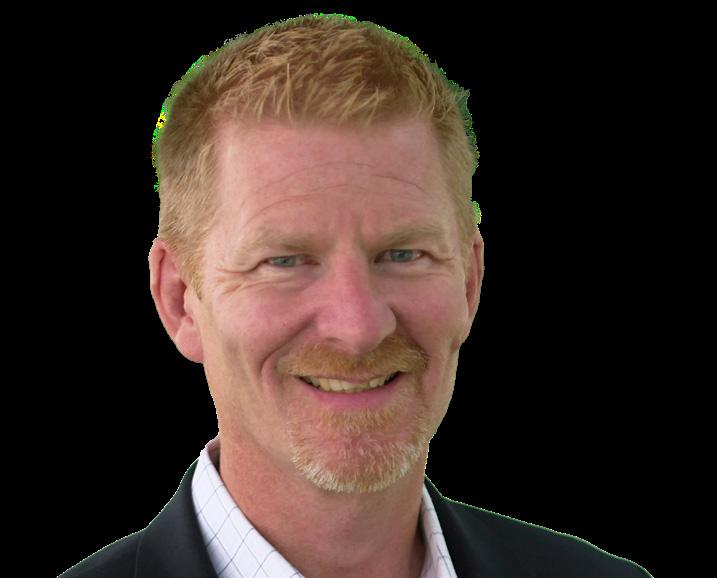
As Shamji describes, one of the recommendations for imaging from that blueprint was to centralise images and make them available regionally. “The Ontario government took that to heart, and in 2010 started the four imaging repositories in Ontario.”
The main objective was to increase speed in the imaging process, ultimately providing a better experience for patients.
“When you go to the hospital and you get an image taken, if there is something detected you have to go see a specialist who often works at a different hospital. If there’s a suspicion of cancer, you go to the cancer centre for example.
“If they have your images available to them, you get treatment much faster,” adds Shamji. “In the old days, they would have to repeat that image. You would have to wait for availability for that image to be taken and then wait for the reading.
“As you can imagine, when you’re going through something that traumatic, the anxiety level is quite high, and there is a high human impact. So, for the patient, this was a phenomenal transformation because that specialist had access to that image and could actually read it and bring a diagnosis a lot sooner.
“That was the idea: to reduce repeat imaging to help patients and to make these systems available centrally and not require local hospitals to make those significant investments.”
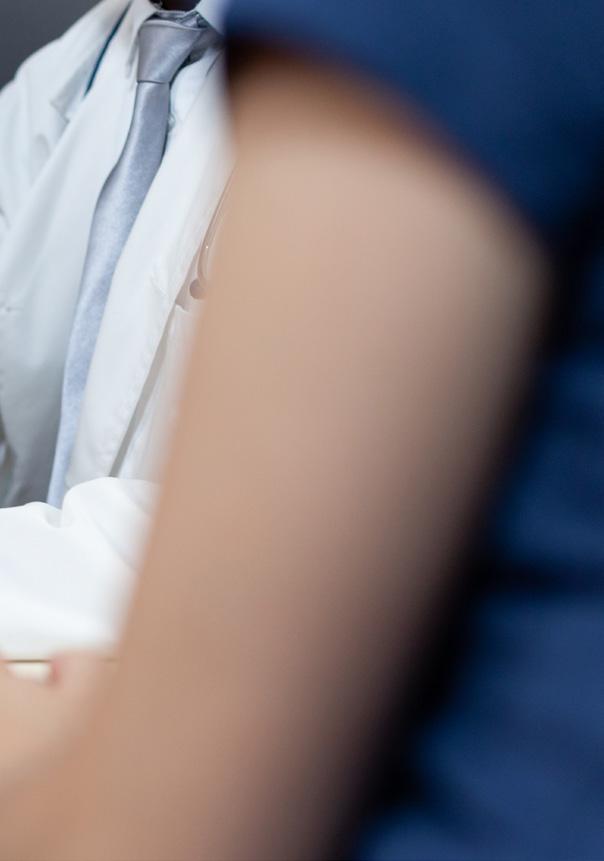
Fast forward to 2018, changes in patients’ behaviour were becoming apparent as services became increasingly centralised. “We began noticing that the patients within the province were moving a lot more than they were in the past,” Shamji explains.
TITLE: PRESIDENT & CEO
COMPANY: ONTARIO CLINICAL IMAGING NETWORK (OCINET)
Shamji has over 25 years of experience in Technology, Business, Healthcare, Software Development, Telecommunications, and Information Services. Shamji was previously the EVP and CIO at The Ottawa Hospital; Chief Operating Officer at Macadamian Technologies, President of Privasoft Corporation, and President of Time iCR in Ottawa, which was acquired by Rogers Communications where Mr. Shamji served as the Vice-President of Professional Services.
Shamji has also spent several years in the US where he was Chief Operating Officer of TeleHub Network Services in Chicago; President of LD Exchange in California; and Vice-President of Network Services for Fidelity in California. Prior to that, Shamji held several senior level positions in Toronto with AT&T Canada, Unitel Communications and Nortel.
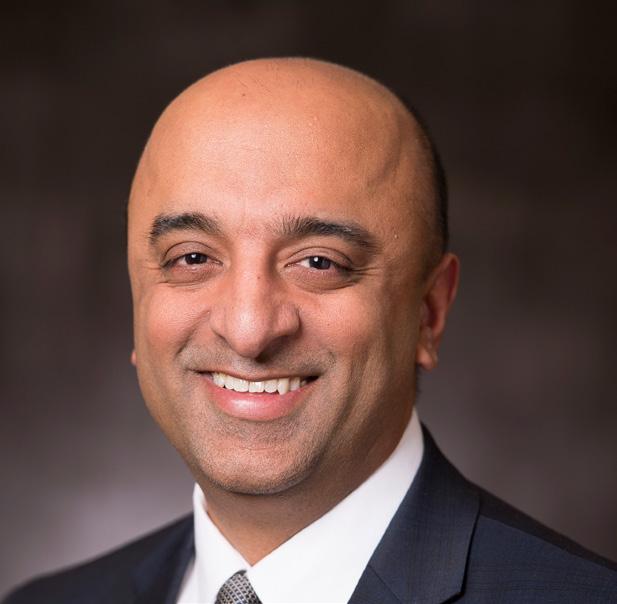


In a collaboration spanning 15 years, GE HealthCare and OCINet work with expertise and mutual trust to solve problems and create innovative solutions
GE HealthCare is focused on providing hospitals with new technologies and innovations to help them deliver a world that has no healthcare limits. As John Insko, Chief Commercial Officer for GE HealthCare’s Solutions for Enterprise Imaging (SEI) business, explains, its work with the Ontario Clinical Imaging Network (OCINet) is no exception.
“We’ve worked with OCINet for over 15 years and have had the opportunity to grow together – building experiences and thought leadership,” Insko comments.
The collaboration between GE HealthCare and OCINet started in 2005 with the building of the DIRs, and today, the repositories hold 185 million exams. With sights now turning towards consolidating these repositories, the long-standing relationship between these two organisations has enabled a healthcare transformation.
“OCINet is a tremendously important customer to us,” adds Mike Hamilton,
President of GE HealthCare in Canada. “We’ve had a longstanding relationship with them in the area of digital imaging repositories, and we’re excited to continue to be part of this digital imaging repositories evolution in Ontario.”

“One thing that’s really special between GE HealthCare and OCINet is the fact that we’ve had extraordinary continuity of resources on our teams on both sides,” Hamilton explains. “When you’ve worked so closely with a collaborative partner like OCINet, there’s an incredible level of expertise, mutual trust and openness to solve problems and create solutions as one team.”
GE HealthCare will continue to support OCINet’s strategic goals, particularly around connected, convenient, patient-centred care. As Insko concludes, GE HealthCare will help OCINet continue to evolve and incorporate other specialties into the digital imaging repositories, exploring cloud and AI-enabled technologies. “As to the future, we’re excited about our ability to continue to evolve this and continue to utilise these learnings and technologies.”
“As services became more centralised, specialists were merging into these centres. And so, patients started travelling to these often very hard-to-find specialists.”
As a result, patients’ health records needed to follow them, and centralisation was the way to go. This is where OCINet comes in: managing all these repositories. Today, these Diagnostic Imaging Repositories (DIRs) hold 185 million exams.
“We have merged into three repositories instead of four. Eventually, the mandate for us is to merge all of them into one DIR, because the technology is now available to do that and do that at scale.”
As David Veeneman, OCINet’s VP of Operations, explains, this goal to merge into one DIR is an exciting strategic move.
“Two of those three were already based on GE HealthCare’s enterprise archive, and the third one was on another vendor’s product. So, we were at a point where that product needed to be substantially upgraded, both software and hardware.”
This, Veeneman adds, was used as an opportunity to align technologies across the province. “This is a significant enabler for us because now converging the entire province, not yet to one DIR, but to one common vendor and to one common technology


stack. This has presented a huge opportunity for us to start stitching those technologies together, and to transition to a common patient-matching algorithm across three DIRs to create consistency from an end user experience, and from a patient-matching experience.
“We’re not a big company; we’re 40 people strong,” comments Veeneman. “So to be able to align on a singular technology stack creates a huge synergistic opportunity for us. Upgrading that to cloud services, going from a single vendor solution, it is going to be materially simplified, a common database, common patient

“When you’re dealing with 12 petabytes of data, and almost 200 million exams, you need a vendor you can trust”
DAVID VEENEMAN VICE PRESIDENT OF OPERATIONS, OCINET
The OCINet offices in Markham, Ontario
matching. All of these things become really complicated when you try and consolidate and integrate all of that data from multiple sources into a different solution.”
With the centralisation of imaging, an opportunity became apparent to help hospitals centralise other systems including PACS. From there came the concept of the shared Picture Archiving and Communications System (PACS). Today, OCINet offers shared PACS to over 40 hospitals in Ontario.
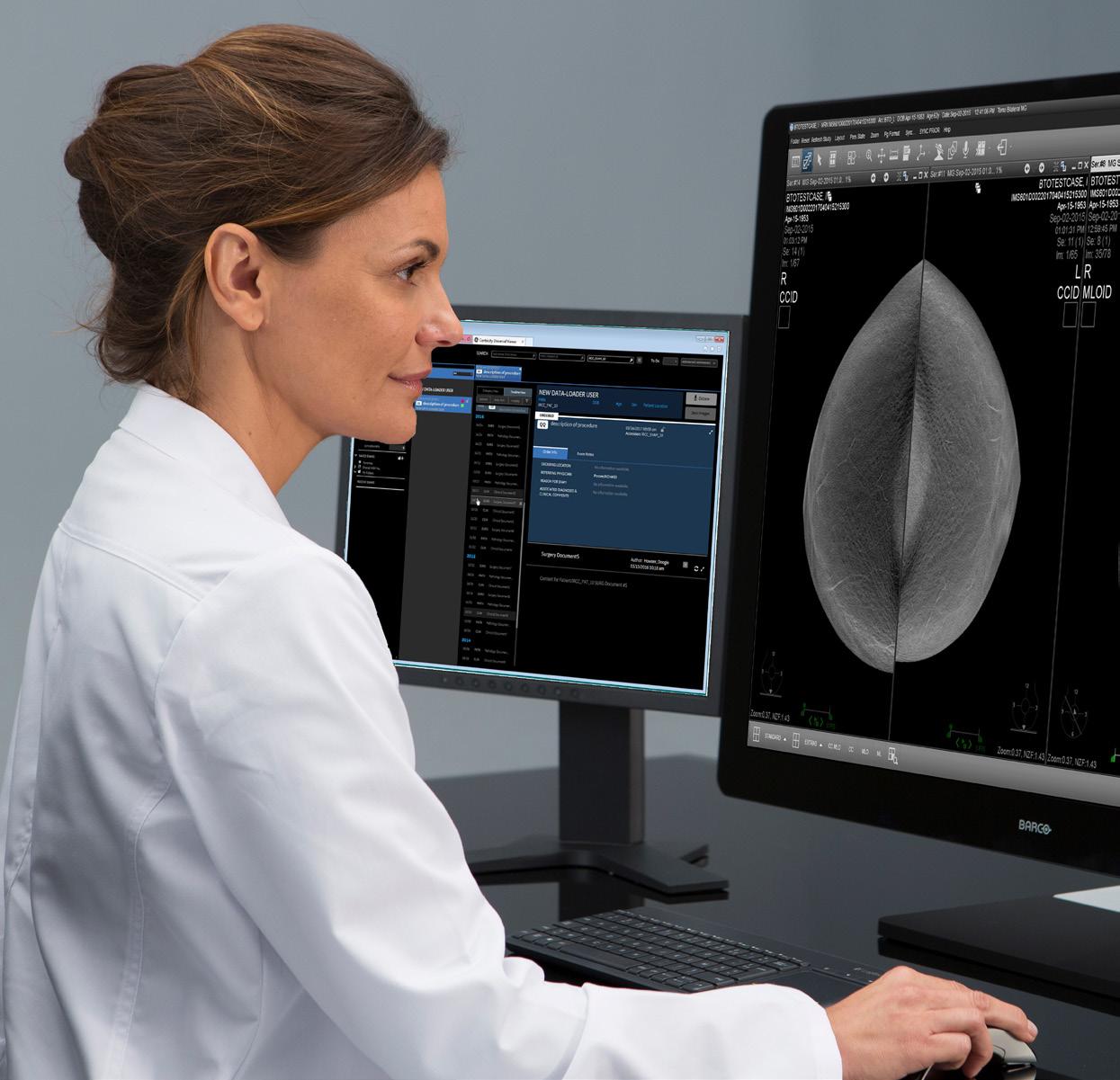
“One of the things that the industry realised,” Shamji explains, “is that if we’re centralising imaging and the availability of images through repositories, that’s pretty closely related to what a hospital does on a regular basis with their PACS, the picture archiving and communication system to read those images.
“And the same value statement could be made in that not everyone should be investing heavily in these very large enterprise systems.”
OCINet’s collaboration with GE HealthCare OCINet has a long-standing relationship with GE HealthCare. “GE HealthCare has been a very strong collaborator for a long time, and they understand the market extremely well, specifically the Ontario market and how that system works,” Shamji describes. “They understand the idiosyncrasies around funding, around capabilities, around integration, around the non-for-profit healthcare system that we run in Ontario. And that makes a difference because anybody who doesn’t understand it will try and implement something that won’t work because it’s very different from the US-based for-profit healthcare system.”
“The collaboration with Ge Healthcare goes all the way back to when we started building the DIRs in 2005,” Veeneman comments. “What’s unique about Ge HealthCare) is the commitment to the DIRs, and to the province of Ontario in particular. A lot of people think of the DIRs as vendor neutral archives (VNAs), and that is certainly a core component of the DIR. But the DIR in itself is not an off-the-shelf product. It’s made of multiple technology stacks because we’re not just archiving data, we’re distributing that data, and we’re providing an image view into that data.
“Success is directly tied to the collaboration that we get from our vendors. And there have been a lot of strong vendor collaborations along the way, but I would say none are as strong, as long or as big as our work with GE HealthCare.”
As Veeneman explains, GE HealthCare’s Edison Datalogue has enabled OCINet to integrate the imaging archives from 18 different PACS vendors, in what has been a major accomplishment.

“Each vendor does their business just a little bit differently but being able to bring that data in from those organisations in a fashion that allows those organisations to decommission their local archives, that’s a huge benefit. That is a benefit from an operational sustainability perspective, it’s a benefit because it returns those funds back to that organisation to allow them to reinvest them in delivering patient care instead of infrastructure.
“It’s also a benefit because, quite honestly, with the magnitude of data that we’re storing, we’re able to do that with an enterprise-grade system that has full image replication across two disparate data centres in a way that a lot of hospitals just can’t accomplish. So, Edison Datalogue has enabled that level of complete image redundancy in a way that data availability and data loss are not even factors any more for us. So that’s been a huge win for us provincially.”
OCINet’s collaboration with GE HealthCare is vitally important, Veeneman adds. “For us, the notion of swapping out vendors every couple of years is an untenable situation. When you’re dealing with 12 petabytes of data, and almost 200 million exams, you need a vendor you can trust.
“The other aspect to this is we have enabled 80-90% of the hospitals in the province of Ontario to decommission their local archives. So, we need a product and a vendor that we can count on long-term. Just like any client, we’re going to have bumps along the way. You’re going to have service disruptions, you’re going to have issues with technology, and you need to know that you’re working with a vendor

“To be able to align on a singular technology stack creates a huge synergistic opportunity for us”
DAVID VEENEMAN VICE PRESIDENT OF OPERATIONS, OCINET
that’s got your back. We’ve lived through those bumps in the past, and we know that that relationship exists with GE HealthCare. And that can’t be underestimated. This is not a collaboration or a solution that we would hand over to the latest and greatest startup. The value of the collaboration and the trust that we’ve built with GE HealthCare over the years is definitely something that allows us to deliver to the province on this trust that’s been handed over to us.”

The opportunities presented by AI have created a lot of interest in countless

industries across the globe, and healthcare is no exception. As Shamji explains, with OCINet managing such enormous amounts of data, the organisation meets one of the core requirements for proper AI: big data.
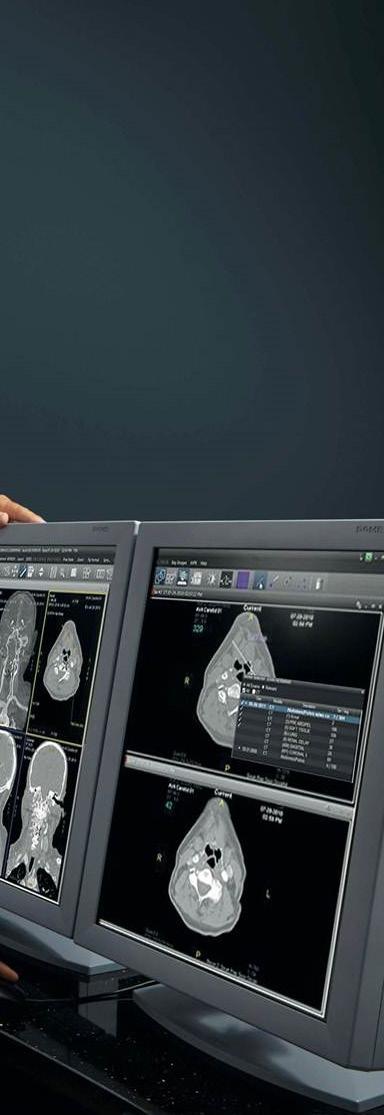
“We manage almost 12 petabytes of data. That, by definition, is big data. So we have one of the core components required to actually implement a strong AI capability. The corollary for that is that the value of AI is likely at the point of care, the highest value. There are other values of AI when it comes to sort of population health analytics, for instance. But in terms of providing care and where you can actually use it the most, it’s really at the point of care. We’re trying to figure out what is the best use of AI with the data that we have, as much as public policy and legal requirements allow.
“Right now, I don’t think anyone’s particularly there yet with enterprise-grade AI capabilities for imaging, but I think we’re pretty close. What I’d like to start to do is try and get our foundation in place so that we can make full use and take full advantage of AI when it’s ready for these large enterprisegrade capabilities,” Shamji adds. “That’s why there has been such a large push towards centralising all of the DIRs and bringing all of that data into one single repository. Whether it’s cloud-based or local at that point, there is value to both. Ultimately, we’re focused on centralising so that we can take advantage of AI capabilities.”
“In the old days, you would have to wait for availability for that image to be taken and then wait for the reading”
SHAFIQUE SHAMJI PRESIDENT & CEO, OCINET
